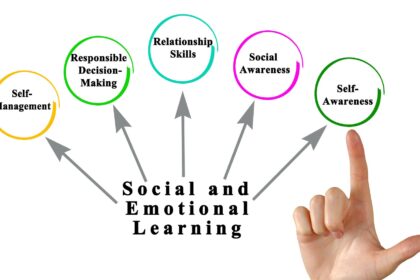How Stress Affects Adolescent’s Biological Growth
Most, if not all people experience a time of turmoil and difficulty during the adolescent stage of life. This time of turmoil and disruptive behavior has been conceptually coined as “storm and stress,” thanks to psychologist Stanley Hall (Arnett, 1999). Typically, it is broken down into three facts including: authority figure conflicts, disruptions and anomalies in mood, and generally risky behavior and activity (1999). Although it is reasonable that the concept has been long part of human tradition, it is only more recently receiving the appropriate consideration in research and study.
From personal account, many storm and stress episodes or behaviors can be recounted. There have been incidents of irresponsible driving, where the risky behavior placed the lives of many people in danger. There are incidents of anger and frustration, showing off a young adult’s embarrassingly short vocabulary (including almost every derogatory word which exists). There are irreparable arguments with friends and family members, and there are acts of defiance in the face of nearly every authority figure known to the adolescent. Teachers, Parents, the Police, and more: no one is spared the wraith of a raging teenager in the midst of a storm and stress episode.
Still, even with an endless array of diverse examples showcasing storm and stress, it is apparent that certain individuals may be more prone to experience the phenomenon. It is also reasonable to argue that there are varying degrees of storm and stress episodes, or severities of behaviors. In other words: it is possible for some adolescents to experience these erratic episodes daily, and it is possible for other adolescents to avoid experiencing the phenomenon at all. There is essentially a scale which can offer a varying experience falling in between these two severities (Larson and Ham, 1993).
One of the biological factors which have contributed to this behavioral pattern is known as “synaptic pruning” (Stirrups, 2018). This is a sort of neural “cleanup process” by which the brain eliminates unused synaptic connections to maximize efficiency. This process creates some cognitive anomalies and deficits for a developing adolescent brain, such as the inability to recognize faces to some extent during puberty (2018). These disruptions in cognition can be confusing and are likely contributing factors to the severity of which storm and stress is suffered.

Beyond biological considerations, there is more than enough empirical research to support the concept that cultural, social, and parietal variations can impact the degree of which adolescents experience storm and stress (Arnett, 1999). And it is also well-confirmed that an adolescent’s relationship with their parents plays a significant impact on their severity of storm and stress episodes (1999). The primacy experiences of a young person (especially those with parental figures and their household environment) are some of the most influential experiences in shaping social identity, psychological development, and behavior (Montemayor, 1986). One’s cultural experience could also be argued to hold similar power when it comes to early cognitive and behavioral learning patterns.
References
Arnett, J. J. (1999). Adolescent storm and stress, reconsidered. American Psychologist. Vol. 54(5). Pp. 317–326. DOI: https://doi-org.ezproxy.liberty.edu/10.1037/0003-066X.54.5.317
Larson, R., & Ham, M. (1993). Stress and “storm and stress” in early adolescence: The relationship of negative events with dysphoric affect. Developmental Psychology. Vol. 29(1). Pp. 130–140. DOI: https://psycnet.apa.org/doi/10.1037/0012-1649.29.1.130
Montemayor, R. (1986). Family Variation in Parent-Adolescent Storm and Stress. Journal of Adolescent Research. Vol. 1(1). Pp. 15–31. DOI: https://doi.org/10.1177/074355488611003 Stirrups, R., (2018). The Storm and Stress in the Adolescent Brain. The Lancet: Neurology. Vol. (17)5. Pp. 404. DOI: https://doi.org/10.1016/S1474-4422(18)30112-1




